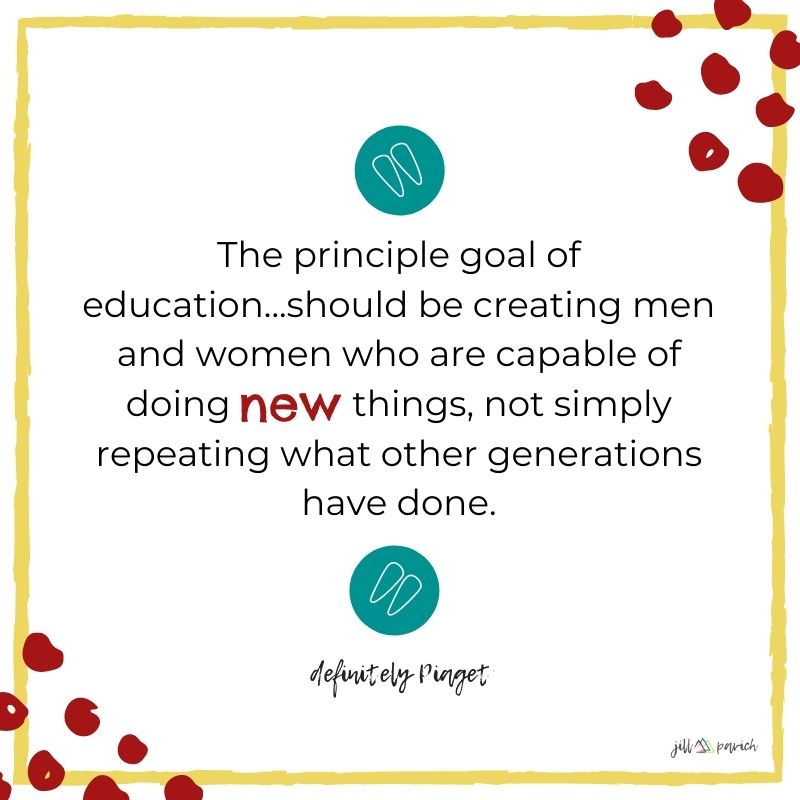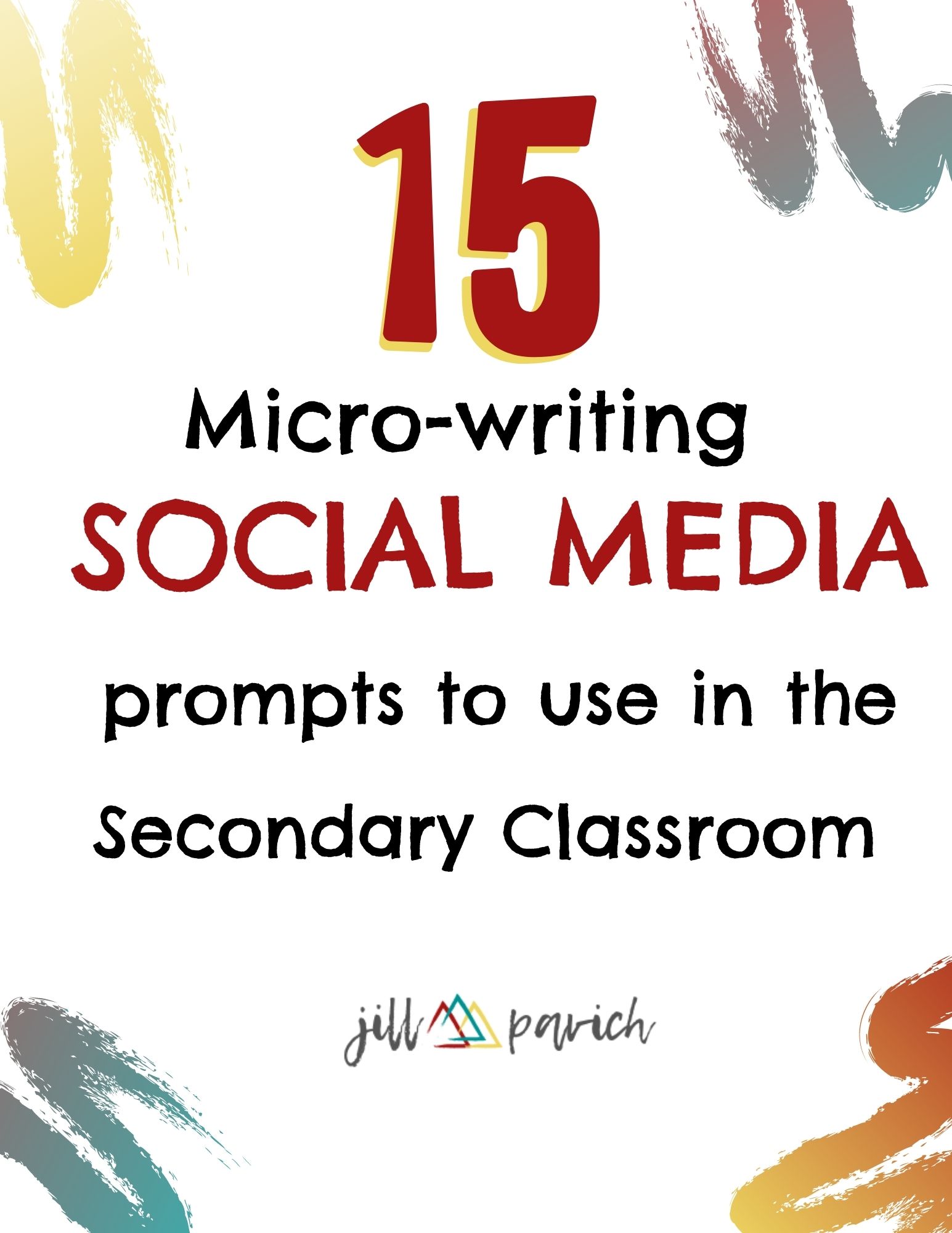The (wicked-tricky) Case for Social Media in the Secondary Classroom

There's no denying the raw power of social media.
From Facebook's role in the Arab Spring in 2011, to Twitter as the core platform for taking on gun control laws in 2018, social media serves as the birthplace of awareness-building and action-taking in a digital era.
It’s also been the incubator for messages like #1000blackgirlbooks, the heart of resilience in #neveragain and the bravery of #metoo.
As we speak, it's giving people all around the world a voice and the ability to break down social, political, and cultural barriers in ways we could never imagine before.
It's helped us argue, advocate, mobilize.
Support, strengthen, sound-off.
It's arguably the ultimate learning tool (and one of *the* most accessible ones for all, at that).
Intentional use of social media can provide a professional pathway for learners to:
- network + collaborate with others
- seek out mentors
- communicate ideas
- explore interests
- celebrate talents
- and exchange world views
Yet it's the least tapped resource in the classroom, largely because it involves the use of a mobile phone, and because its alter-ego tends toward the Captain of Distraction.
Not to mention the obvious: the use of ‘social’ platforms is often viewed as inappropriate in an 'academic' classroom setting (labels that are about as fair as calling me a ‘geek’ or a ‘jock’, but I digress).

So while the benefits of using social media in the classroom are many, the pushback is REAL.
Funny thing about technology, though…it’s not *going* anywhere.
Students will continue to sneak cell phones under their desks, just as colleagues will continue to text away during staff meetings (because hey, no one taught us this stuff).
If we can stop viewing powerful tools like social media as an off-campus playground or a one-off unit in 'digital citizenship'…
And if we can start seeing them as an authentic way to teach students about opportunity, habit-building, and mindset…
Believe it or not, it just might help us meet our students where they are and set them up for success in where they hope to go in school, work, and life.
So, in this post, we’re stirrin’ up the wicked-tricky case for using social media (and, simultaneously, cell phones) in the secondary classroom.
Starting with argument number one...
1 | Digital Planet, Digital Natives
In their book, The Google-Infused Classroom, expert educators Holly Clark and Tanya Avrith outline 10 key characteristics of today's learners, the first of which is this:
Today’s learners are the first, real digital natives.
Translate: they've never known a world without smartphones, tablets, and social media.
Meanwhile--and watch me date myself here—if I think back far enough, I remember a time when I could leave the house without my phone and NOT be stressed by that!
But for our students (and 'Today-Jill', mind you) this just isn’t the case. They operate with smartphone in hand as appendage; they rely on it as part of their DNA--an extension of their being--and social media is their headquarters.
We know this...duh.
Yet in knowing this, consider for a moment how we operate in response. Plenty of school- and class-wide policies ban the use of smartphones or social media inside classroom walls.
Now in all fairness, there are plenty of arguments that can be raised as to why that is.
Clearly, safety is an issue, so I'd be remiss if I didn't go there.
But I’d also be remiss in failing to note that safety will continue to be the issue, even if we aren’t using these tools in the classroom.
'The first 16 or 18 years of a person's life is not a rehearsal. Young people are living their lives now.'
--Sir Ken Robinson
Check this out...
In an attempt to prove what a distraction social media and mobile phones are in the learning environment, one teacher shared on Facebook the results of an experiment she did.
She had asked her students to turn their phones on loud, and any time they received a notification, they were asked to go up to the board and put a tally mark under the appropriate category responsible for causing the disruption.
Thereafter, someone reposted the photo of the results along with the following remark:
‘Every one of these tally marks is an interruption in a student’s education. Cell phones can be toxic to a learning environment.’
I hate to break it to you, but that cell phone IS the education, or a large part of it anyway…
According to research conducted by Project Tomorrow, those young adults watching YouTube for half their day aren’t just passively consuming information; they’re attempting to learn real skills.
In other words, when they post things online, it’s not limited to the casual string of 'fire' emojis in response to someone’s outfit or their microblading.
Rather, they’re using social media in some surprisingly academic ways.
They're using it to crowdsource the skills they’re interested in learning.
Consider a young boy and his bowdrill, for instance, as one of the earliest cases of this (circa 2009!).
Nelson Smith found his way onto YouTube, sharing a video of himself trying to use his bowdrill, to no avail. He asked his audience to help him troubleshoot: 'please tell me how to do it!'.
At the time, tens of thousands of responders had chimed in, offering tips and advice for this young kid who wanted to learn.
In this case, social media isn’t merely an interrupter, it’s a wellspring of knowledge, support, and networking opportunity.
And if we can view it more from this light, we are teaching our learners the important art of resourcefulness and the beauty of a growth mindset.
The best part about it is...so many teens own mobile devices! Inviting them to use these in important ways becomes the ultimate access-granter for leveling the learning gap.
'If you're going to ignore social media in the classroom, then throw out the ISTE Standards for Students and stop pretending you're 21st century...social media is another tool you can use to make your classroom more engaging, relevant, and culturally diverse.'
Vicki Davis, educator + expert
But hold the phone...I’m a teacher, I get it.
Lots of times, our students aren’t mature enough to use their cell phones responsibly. These devices can be a distraction, and inviting them into the classroom can certainly invite unwanted mischief (i.e. I've seen my fair share of digital drug busts).
However...and in their defense:
Students don’t use their phones for academic purposes because they’ve never been given the guidance or the freedom to do so!
When we teach digital literacy, it’s a lot of ‘don’t do this’, and ‘don’t do that’...‘this is dangerous’, and ‘that's unacceptable’.
There’s no doubt the socially-rooted dings and pings of the mobile phone will continue to tempt our students as they enter college and into a career (again, one glimpse around a staff meeting’ll provide plenty of evidence of that!)
So it’s more genuine on our part to:
- teach students how to manage mobile distraction
- model the use of social platforms in positive, professional, and productive ways
- explore ways to manage projects, build habits, and balance schedules via mobile apps
Weaving everyday digital tools into classroom workflow is a brave move in a bold direction, but it makes way more sense than sweeping the inevitable under the rug for our teens to deal with on their own, and when the stakes are much higher.
2 | Multi-literacy is a thing.
Thanks to the digital era, today’s readers are increasingly multi-literate.
With information coming at us from all angles, we’re learning how to sift through and filter varied input, while simultaneously synthesizing multiple mediums to make meaning out of what we see, hear, and read.
Text, therefore, is no longer the only source of information for us. These days, we learn about our world through a combined series of images, sounds, video, *and* text.
So what does this mean for our writers?
As a starting point, they need to know that there's a whole world of written communication worth mastering out there, well beyond the formal essay (and they deserve to know the full scope of how that system operates!)
An interplay exists between the different mediums we use to communicate in a digital era. A divine ecosystem among them, both short and long-form.
So quick example: I could have an award-winning blog post, but with all that’s available today, it may never see the top of the search engine. I can use platforms like Instagram, Facebook Live, and Pinterest (yes, Pinterest!), though, as my sounding board to say: ‘hey! Come take a look at what I’ve made!’
Using this 'ecosystem' requires the writer to repurpose information in different ways and for a range of diverse audiences.

The various social (and other) media platforms work as a team to communicate our message and spread our voices to the far ends of online infinity.
(Imagine what this could do for your writers who most certainly have something to say, but don’t usually have someone other than you to say it to?)
As writers who communicate to multi-literate readers, we have to know how to:
- organize and refine robust blog posts that serve someone other than ourselves (essay writing, only cooler)
- use keywords to draw digital traffic to our creations (vocabulary)
- condense our point into microblog-worthy memos (summarizing, the main idea)
- communicate our message in scroll-stopping images (visual literacy)
- speak our text direct-to-camera (public speaking 101)
In short, when we communicate in a digital world, we need to make our ideas accessible to a modern audience who is here, there, and everywhere online, but never in the same space at the same time.

Now clearly, as secondary ELA teachers, we aren’t giving up formal essay instruction. For many of us, it is our obligation to teach, plus there’s plenty of merit in learning formal, academic writing skills.
But what it comes down to is this:
Are we willing to share space with other mediums (which--realistically speaking--gain priority since they're not limited to *just* academia)?
That’s the question we need to ask ourselves if we’re going to embrace an evolutionary response to change.
4| It most certainly IS our business…
It’s called ‘social’ media for a reason, right? It’s 'not meant to mix' with academics. Matter of fact, your students are probably begging to keep their social lives super-separate from the classroom, am I right?!
And while those arguments feel warm and welcoming on the surface, there’s more to it yet.
The first contention—that ‘social’ is meant solely for social—makes me chuckle.
A quick sweep of the social media landscape will reveal an onslaught of businesses, companies, organizations, and influencers who are actually very *serious* about spreading their ideas, mission, or product.
There isn’t a successful brand out there right now that isn’t using social media to increase visibility and leverage a message. Right now, our students are watching very closely the moves of their favorite influencers who are using platforms like Instagram and TikTok to do just that.
And while they watch, we've got to give them some credit because they’re asking themselves the right questions:
What is this person trying to say? Why do they want to say that? How are they saying it (which app, filter, format)?
Even better yet: ‘How can I do that? What would I say?’ (followed by the ‘why’s?’, and the ‘how’s?’).
So if they haven’t told you already, plenty of students will own that:
‘I want to be an influencer when I grow up.’
But, don’t lie...as adults, we’re often quick to discount that statement.
To *us*, it sounds like the days when we declared we were running off with the circus or pursuing an acting or modeling career (‘Mom, I’m goin’ to Hollywood!’).
But one layer deeper, and these statements reveal something much bigger about our learners.
At the heart of their dreams of going viral or being able to ‘influence’, lies our students’ desire to make an impact. It’s their desire to be seen, for their voices to have meaning and be heard.
That’s a BIG deal.
It says they have a motivation (to create!) all their own, the kind of interest for learning we don’t need to force.
It says that our writers have something important to say, if only they could figure out how to organize and convey the powerful ideas they possess.
That’s where we come in.
Communicating online involves reading, writing, using your own voice, and listening to those of others. As secondary ELA teachers, this is *definitely* our department!
But then again, what if our students don’t want us mixing the two?
In my own experiences as an educator and in speaking with students, it comes down to this: more often than not, learners are asked to use modern platforms for the sake of using them, though not for the purposes in which they’re intended.
So imagine me asking my classes to create a blog post featuring the answers to their Siddhartha study guides (womp, womp).
If students are being asked to use a tool that gives them the freedom to create, but for reasons that don’t call to their natural passions or interests, then it’s no wonder they rally against it!
For 15 Micro-writing SOCIAL MEDIA prompts to use in your classroom, click here!
All things considered, our learners don’t want us designing and controlling their digital experience entire (which we so often do, former Self including!).
Instead, in an online world where anything is possible, it’s an opportunity for them to truly take the lead in creatively crafting these experiences for themselves, with us giving them the guidance--not the dictation--to do so.
So what might it look like if we said, ‘Siddhartha, TikTok, Chapter 6 comprehension…GO!’ Provided you norm that properly, you’ll undoubtedly get a range of creative, reader responses as opposed to a bunch that look exactly the same.
Reframing the Problem
In 2013, 78% of teens had cell phones. Per Pew Research, that number jumped to 95% just five years later.
Cell phones are ubiquitous, and their staying power is truth.
Instead of using our own social media accounts to complain about the problem, it's time we reframe it all together.
So how do we do that?
In her book, Learner-Centered Innovation, Katie Martin offers some insight in this regard.
Citing an article in the Harvard Business Review titled, 'Are you solving the right problems?', she shares the story of the 'slow elevator' to prove a point: how we see a problem can actually prevent us from creating proper solutions.
So, picture a slow-moving elevator in a high-rise office building. Busy employees are ready to riot because of it.
In terms of a solution to the issue, most would say, why not replace it with a newer model or use company funds to upgrade the engine or swap out the cables, right?
Meanwhile, one sly fellow steps in and says, why not hang some mirrors near the elevator? That'll keep ‘em busy while they wait, right?!
And boy, was he right. Hello, Narcissus...! People *love* to look at themselves!
Instead of tackling the problem itself, homeboy readjusted the focus of the problem from the mechanics of the device onto the greater environment surrounding it. No more office-space mutiny.
Likewise, if mobile distraction is going away anytime soon, it's moving at the pace of that elevator. If we're going to get out of the basement-level Complaint Department, we're going to need to reframe the problem.
Rather than look at the phone itself as a distraction + how we can get rid of it, let's reframe:
The phone exists...so what apps can students turn to in order to manage potential distraction?
As one solution, having students actively analyze their consumption stats is one way of helping them understand where they spend their time, be that on social media or otherwise.
Pair that with a reflection on how they're spending their time versus how productive they are from week to week creates a valuable lesson even we, adults, could benefit from.
(As I write this, *literally* the Screentime notification pops up on my phone. Looks like I’m up 14% from last week. It immediately makes me wonder why that is... see how that works?!)

There are also tons of practical apps which help us track our time and productivity while working online, one of which is called Toggl.
If your students are working on a team project, for instance, they can track the amount of time they’re spending on things like research, drafting, offering feedback (drifting off to social media!).
They can also see how much time their teammates are putting in, which is a great way to level the work in a modern group setting.
The best part is, a platform like Toggl isn't just another education app, it’s a real-world one. The translation for current students-slash-future-professionals is as seamless as it gets.
To wrap it up…
Boom. That woman just dropped the mic.
It's a wicked-tricky case, I know. But I encourage you to give it a shot. Tap into your students’ natural talents and interests. Try using social media as a platform for micro-writing practice, and to let their passions emerge, grow, deepen.
To get some inspiration and to get your students going, download the PDF at my Free Resource Library.




